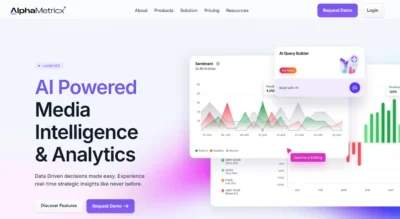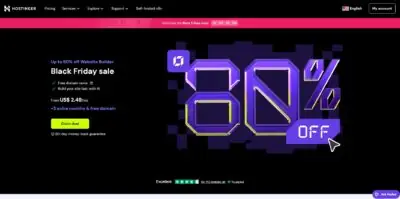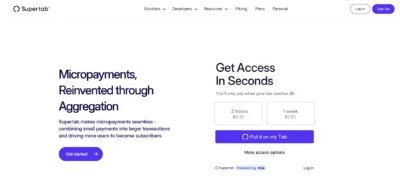Miles Finlay founded PROG, an independent Australian programmatic consultancy agency for publishers with a global client base.
Programmatic advertising is a must for digital publishers committed to optimizing their ad revenue. It allows sellers access to a much deeper pool of demand partners than they would have through traditional sales.
It’s hardly surprising then that programmatic deals are projected to account for 90% of all US digital display ad spend in 2023. With that said, programmatic advertising has its challenges.
After all, both advertisers and publishers use programmatic software to improve their ad campaigns. Advertisers are perpetually hunting for the highest return on ad spend (ROAS), meaning lower cost per mille (CPMs) and cost per click (CPC), while publishers are trying to drive those rates higher.
Against this backdrop, State of Digital Publishing (SODP) spoke with the founder of independent programmatic lead agency PROG, Miles Finlay, to better understand what publishers must consider when shaping their programmatic ad strategies.
Programmatic spending continues to grow even as larger publishers try to diversify away from ad revenue. Is this a sign that some publishers are worried that programmatic favors advertisers over publishers?
At the moment, programmatic advertising may seem to prioritize advertisers over publishers. After all, a shift in the landscape in recent years has resulted in buyers regaining more control of their ad spend, resulting in richer data on campaign performance. And rightly so, as it was a little like the Wild West, with too many middlemen taking their percentage of the advertising dollar.
On the user side, the shift related to privacy concerns and more awareness of user data protection and consent. From the buyer side, ad tech advancements have delivered greater control over ad operations and data, cost reductions and improved assurance of brand safety and ad quality.
But that’s not to say that one side benefits more from programmatic than the other. Programmatic advertising works best when the buyer and publisher work together to offer high-performing campaigns and results for the advertisers. Both sides need to win for this relationship to make sense.
With that in mind, publishers constantly review and optimize their programmatic stack. If you stand still, you’ll get left behind very quickly, resulting in a race to the bottom in terms of revenue.
Programmatic is often described as an end to the laborious nature of traditional ad sales. What does this characterization miss when it comes to programmatic?
For publishers, direct sales have always taken priority over programmatic ads. As the technology and a shift in buyer trends have evolved over the years, publishers should now view direct and programmatic on a level playing field.
Programmatic opens up major new opportunities for publishers to return high streams of revenue without having a team of salespeople. But while programmatic is all about automation, too often publishers set up their programmatic ad offerings with a kind of “set and forget” mindset.
Publishers looking for success will keep a very close eye on reporting to give them insights and direction on what’s working well and what needs to change. These insights are crucial to managing dynamic pricing and yield optimization.
Taking control of their programmatic stack is the first step to making that happen, as it allows publishers to monitor their suppliers. They should know the revenue per mille (RPM) value of every one of their web pages and be able to scale it easily so they’re set up for success when traffic increases or spikes.
Programmatic spend will kick in to maximize the ad revenue opportunity, which is something direct campaigns cannot do. Unlike direct sales — limited to the number of impressions booked for the campaign or fixed-price sponsorship — programmatic can scale up revenue when website traffic increases. More ad requests equals more successful auctions.
For example, if a publisher sells the homepage placements for 24 hours at a fixed price, then any traffic increase means the campaign was sold based on a smaller forecast.
What are the biggest challenges publishers face?
The main challenge for publishers is monetizing their content programmatically without employing a team of in-house experts.
Programmatic is not a one-size-fits-all solution and there’s a large number of variables to optimize for, including:
- Brand safety
- Ad quality control
- Ad blocking
- Ad viewability
- Ad fraud
- Header bidding
- Open bidding
- Yield management
- Data privacy
- Supply
- Demand
- Website traffic
To address these challenges, publishers must carefully manage their programmatic strategies and tread their own path. Publishers should collaborate very closely with their supply-side platforms (SSPs) and demand partners while staying current on industry best practices and emerging technologies.
Given the complexity of programmatic advertising optimization, are smaller publishers at risk of falling behind the curve?
I set up PROG after working as a programmatic lead across several large enterprise companies. After seeing the challenges these companies were having, even with their in-house resources, it became apparent there was a lack of experience and knowledge driving decisions from the publisher side.
More often than not, they were being led by the buy side, which is far from desirable and doesn’t speak to the goal of ad revenue maximization. But then, that’s why they hired me as programmatic lead.
That said, most publishers don’t have the resources to hire a programmatic lead, which is a service I wanted to make more accessible for those trying to navigate the complex programmatic landscape. The PROG team partners with publishers to provide independent advice, ad ops and chart programmatic roadmaps.
How do publishers know they’re getting the most out of their ad-tech stack?
Whether publishers are doing enough with their ad-tech stack depends on their individual programmatic strategies, goals and challenges. But I’d advise them to take a step back and ask a few critical questions:
- What is your RPM value today, last seven days, last 30 days, month on month, year on year?
- Do you know the RPM value for each supplier?
- Has programmatic revenue increased 25% year on year?
- Is the average ad unit viewability over 75%?
- Did your programmatic ad revenue consistently rise during a recent surge in website traffic?
- In your ads.txt file, do you have more resellers than direct entries?
- Do buyers reach out directly to set up PMP and PG deals?
- Do you have a user ID strategy in play?
If the answers are “no” or “I don’t know” to any of these questions, there’s still more to do. For example, knowing your RPM value at all times will help you identify which suppliers are returning excellent CPMs and which simply are not. These latter suppliers will be aiding publishers in a “race to the bottom” regarding yield management.
Many publishers are actively working to optimize their ad-tech stacks to balance revenue generation with user experience (UX) and compliance. But they need to continually assess and reassess their strategies, adapt to industry changes and invest in the right technologies and partnerships to remain competitive and deliver value to advertisers and users.
The key takeaways are to measure and report all programmatic revenue streams down to the very last ad impression. Reporting should be happening daily to measure trends and grow revenue. A good ad stack tells a continuous story on publishers’ ad product offerings and is flexible enough to move with the ever-changing landscape of programmatic advertising.
About Miles Finlay
Miles Finlay has 20 years of experience working as a publisher, website designer/developer and ad operations manager. With this knowledge, he set up PROG, an independent Australia-based consultancy agency for publishers with a strong record of driving programmatic success and delivering profitable, high-performing ad stacks.






